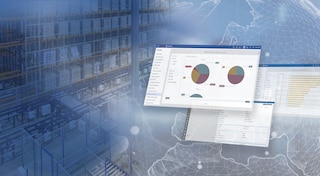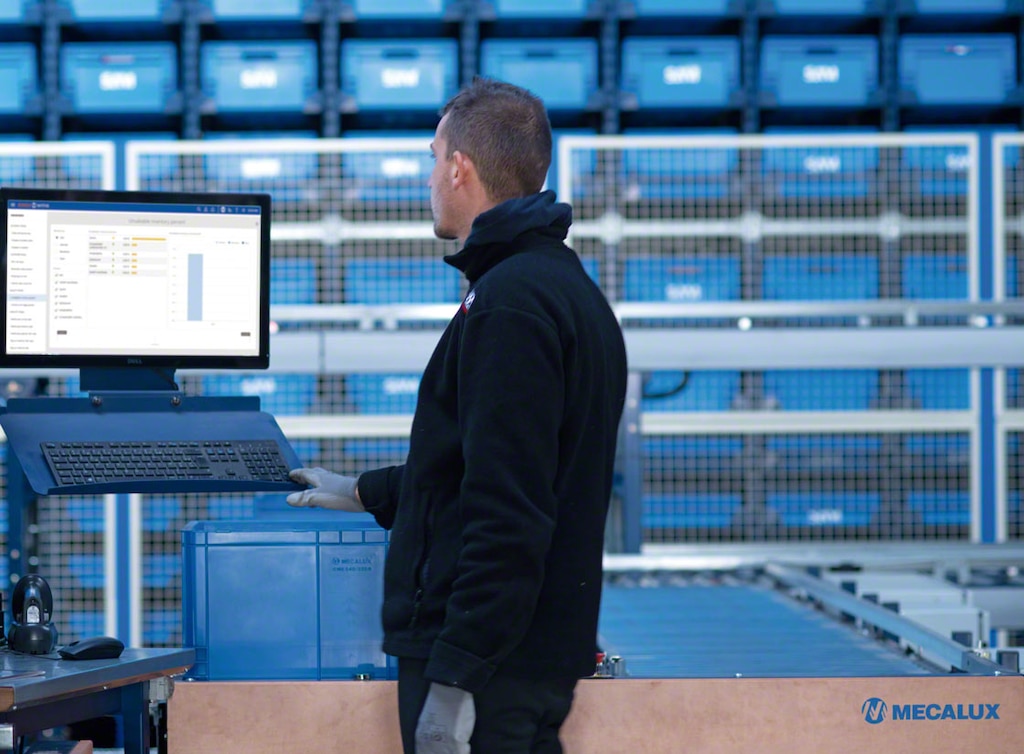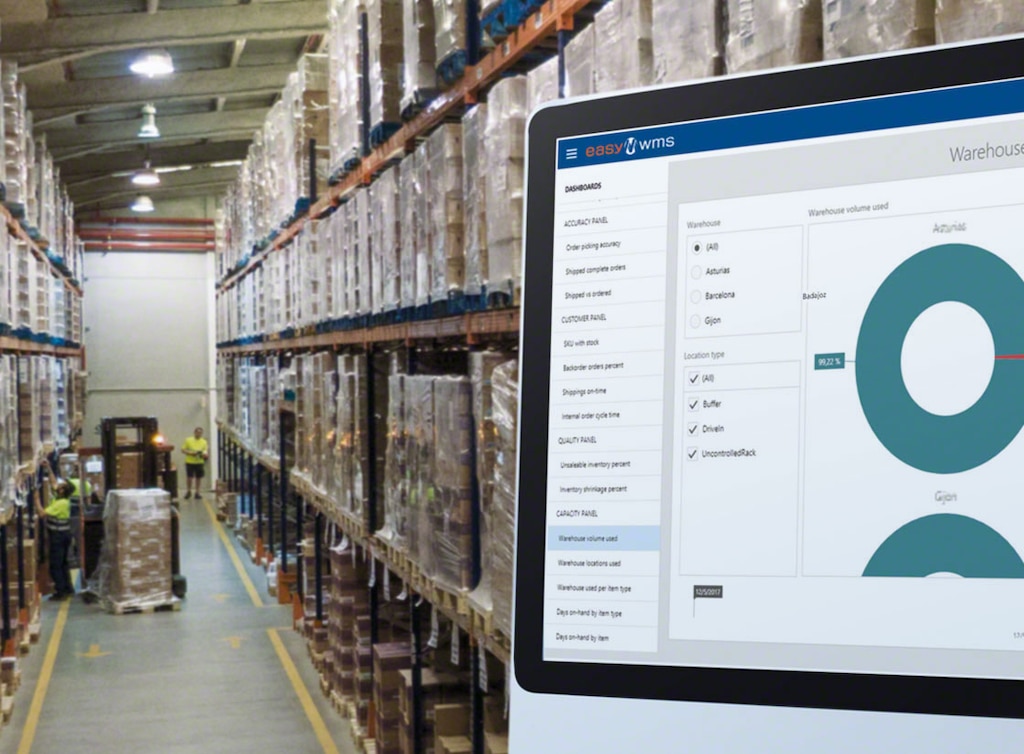
Advantages of SaaS WMS solutions
Having a cloud-based WMS system simplifies the installation of warehouse management software, making it accessible to any company. As implementation of the WMS and data storage are moved to external, off-premise servers, companies don’t have to concern themselves with the purchase and maintenance of the equipment running software. Although the advantages are clear, there are certain limitations to take into account when considering this modality.
In the logistics sector, the use of cloud-based software is increasingly widespread. In fact, according to a study from German company Axit/Siemens, over 50% of logistics experts surveyed already employ cloud services to manage their processes, and 20% plan on doing so in the near future.
But what are the pros and cons of relying on a cloud app? In this post, we illustrate the value of SaaS WMS solutions and the benefits they bring to companies.

Cloud logistics
Cloud-based software or SaaS (software as a service) is an alternative to on-premise applications, which need to be deployed on the business’s own servers. Cloud-based software, in contrast, runs on the specialized cloud provider’s servers, and the company accesses the tool via an internet connection. In this case, the business doesn’t have to worry about hardware on their servers or the related maintenance, backup files, and data integrity.
Not only is it user-friendly, but it’s also easier on your pocket. With on-premise software, in addition to the cost of the equipment, the company needs to bear the initial cost of perpetual licenses. On the other hand, the cloud version comes with a subscription model, and the cost is spread out over time. It’s fair to say that the capital expenditure is much lower with SaaS.
Most logistics software providers offer both modalities. Logistics managers need to decide on the best option for their company’s needs. In addition to WMSs, the many SaaS logistics apps include ERP systems, MESs, and TMSs, among others.
Installation of a cloud WMS
The operation of a cloud-based WMS system is as follows: the customer contracts the WMS service, and the provider configures all the workstations and radiofrequency scanners to communicate directly with the server in the cloud. Therefore, it requires no major installation; all the customer needs is a low-latency internet connection and sufficient bandwidth on each of the computers on which the SaaS will be deployed.
In the case of Mecalux, as a WMS provider, we’re by the customer’s side through the entire life cycle of the WMS: from its conceptualization through to its development, implementation, start-up, and even maintenance and support.
As a matter of fact, Mecalux makes Easy WMS technicians available to customers during the rollout phase. These experts validate the process and are present in the warehouse from the time users begin working with the WMS until they become familiar with the new software.
Positives (and negatives) of implementing a cloud-based WMS system
The digitization of logistics management systems represents an essential step forward in adapting to an integrated supply chain. Product traceability and returns management, along with other challenges, compel companies to exchange information with customers and suppliers. Against this backdrop, SaaS WMS solutions offer the following advantages:
- Smaller initial investment: by not needing your own servers and by paying for the licenses by means of a periodic fee, your initial investment is substantially lower.
- Flexibility: on-premise apps often include a fixed number of licenses, while SaaS allows you to have a variable number of them. This is very useful for companies with highly seasonal operations. Moreover, for businesses that have multiple warehouses, a cloud-based WMS system ensures synchronization between the stock stored in those facilities, as well as between the various operations taking place.
- Maintenance and security: the customer doesn’t need specialized IT staff for the maintenance, backup, and integrity of both the databases and the application itself.

On the other hand, employing an SaaS solution is also linked — not always justifiably so — to certain disadvantages:
- Less control over data: many organizations are afraid to transfer information from their own servers to those of the provider due to possible information leaks. Nevertheless, it’s much more likely for errors and leaks to occur when data are stored on the customer’s mainframe, as this is less protected against web threats.
- Dependence on an internet connection: implementing SaaS involves relying completely on a web connection. Although this isn’t an issue in cities, there are still industrial parks where internet access is still somewhat spotty. And this is an important factor to consider.
Generally, more and more companies are choosing to use cloud-based solutions, since these outsource the security and maintenance of the app, resulting in reduced warehousing costs. Plus, SaaS WMS solutions have a much more flexible structure that can be adapted to peak workloads in a warehouse. All in all, it’s best to assess your different options with the software provider, who will advise you on the right solution for your needs.
SaaS WMS solutions: satisfied customers
Mecalux’s warehouse management system, Easy WMS, has been recognized by international consulting firm Gartner for several years now. This WMS from Mecalux, an optimal solution providing real-time inventory control, is available in both SaaS and on-premise modes. So far, organizations in 36 countries have chosen to implement Easy WMS. Below are three examples of our happy customers:
- Caffé D’Autore: besides equipping the warehouse of this espresso machine distributor with picking shelves, our company deployed Easy WMS in its cloud version to provide Caffé D’Autore with real-time inventory control. “With Easy WMS, we’ve optimized the operations and spaces in our warehouse. We’ve also eliminated errors and improved service. In short, we’re faster and more efficient in serving customers,” affirms the business’s Technical Department Director.
- Casintra: logistics operators such as Casintra make use of WMSs to sync their stock with that of their customers. The SaaS version of Easy WMS allows the company to work online with all its customers at an extremely low cost via a private, completely secure network. Casintra’s Operations Manager explains, “To know the status of their inventory, customers access Easy WMS with a password.”
- Danone: this food-sector multinational, branded as Dannon in the US, needed software that would organize the more than 700 daily orders processed at its facility. Thus, the company went with Easy WMS in its cloud mode to guarantee the traceability of its products along the entire supply chain. In addition to Easy WMS, Danone incorporated the Multi Carrier Shipping Software and Supply Chain Analytics Software modules with the aim of increasing last-mile efficiency and instituting an analysis and continuous improvement policy in the warehouse. “We felt that Easy WMS fit our budget, and the turnaround time was reasonable. Likewise, the fact that Mecalux is a well-established, market-recognized company helped us to reach our decision,” indicates Danone’s Iberia Supply Chain Director.
Why deploy an SaaS WMS solution?

In the end, logistics is the assurance that the customer will receive the item as per the previously agreed-upon terms. To streamline this process, companies are purchasing cloud-based WMS systems, which are more flexible and adaptable to each organization’s needs compared to on-premise versions.
SaaS WMS solutions require a lower initial investment when implementing the software and ensure system maintenance and protection of the data generated in the warehouse(s). To learn more about Easy WMS SaaS solutions, don’t hesitate to contact us. One of our expert consultants will advise you on the best solution for your business.
